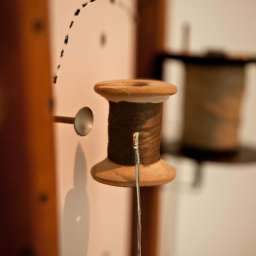
History of Sewing Machine

The first practical sewing/” title=”Stitching Stories: A Beginner's Guide to Sewing”>sewing machine invented by Elias Howe
The sewing machine is one of the most important inventions in the history of textile manufacturing. It revolutionized the clothing industry and brought significant changes to households worldwide. Let’s delve into the captivating history of the sewing machine.
The Inception of the Sewing Machine
Although various attempts to create a working sewing machine occurred earlier, it was Elias Howe who perfected and patented the first practical sewing machine in 1846. Howe’s machine featured a lockstitch mechanism and utilized two threads, one from above and the other from below the fabric, creating a strong and reliable stitch. This marked the beginning of a new era in sewing technology.
Mass Production and Industrial Revolution
With the success and value of Howe’s invention, sewing machines gradually gained prominence in the mid-19th century. However, it was Isaac Merritt Singer who propelled sewing machines into mass production. In 1851, Singer improved upon Howe’s design and introduced additional innovations that made sewing machines more efficient, practical, and user-friendly.
“The work which the sewing machine alone can do is almost beyond comprehension.”
– Singer
Singer’s contributions to sewing machines allowed for wider accessibility, enabling both businesses and households to employ this labor-saving device. This development played a vital role in the Industrial Revolution by increasing productivity and reducing labor-intensive sewing tasks.
Technological Advancements
Over time, sewing machine technology advanced rapidly. Manufacturers introduced electric-powered sewing machines in the late 19th century, which further enhanced sewing speed and efficiency. The introduction of electronic controls, computerized stitching patterns, and programmable functionalities during the 20th century heightened the precision and range of sewing machines, catering to various fabric types and stitch designs.

A modern computerized sewing machine
Sewing Machines Today
In the present day, sewing machines are widely used by hobbyists, fashion designers, and clothing manufacturers. They have become an indispensable tool in the creation and altercations of garments. The modern sewing machines offer a plethora of features, including automatic thread cutting, adjustable stitch length and width, embroidery capabilities, and more.
The Legacy Lives On
The history of the sewing machine demonstrates how a simple yet brilliant invention transformed the textile industry and shaped the way we dress. With continuous advancements, sewing machines continue to evolve, enabling both professionals and enthusiasts to explore their creativity while easing the once tedious and time-consuming art of sewing.
So whether you are a sewing enthusiast or simply an admirer of the art behind clothing creation, take a moment to appreciate the remarkable history and impact of the sewing machine on our society.




